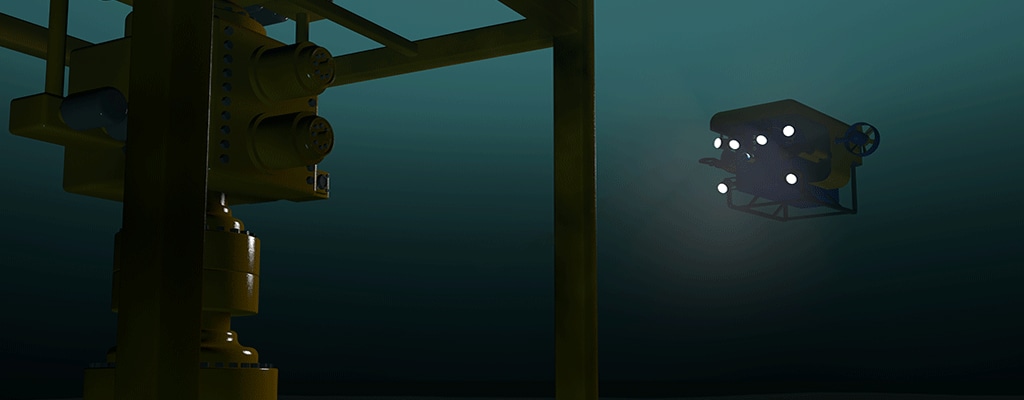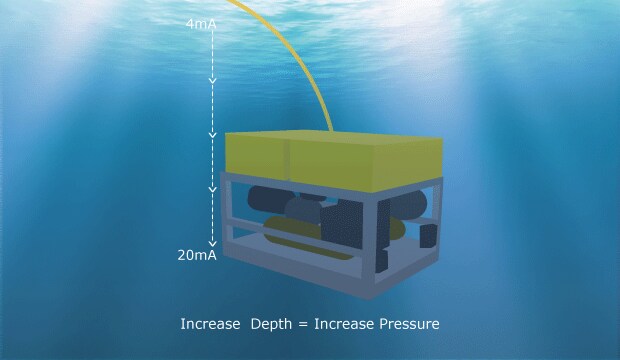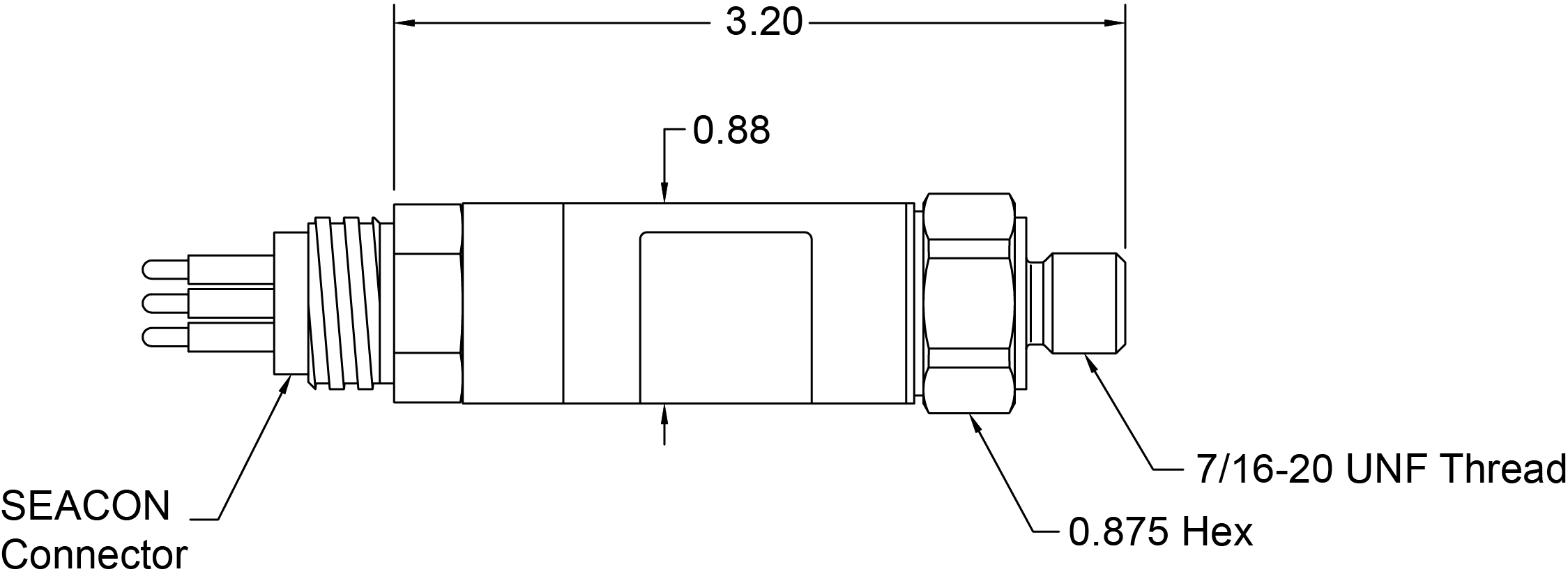
ROV / AUV / UUV Pressure Transducers
TE Connectivity (TE) manufactures pressure transducers for ROV applications featuring a submersible wet mate connector.
Subsea level measurement can be accomplished with the use of a pressure sensor. Typically an ROV (Remotely Operated Vehicle) is lowered into the ocean with the pressure port either installed inside an enclosure, connected to a hydraulic circuit, or completely exposed to the sea water. As the ROV is submerged, the water pressure or hydraulic pressure is exerted on the diaphragm of the pressure sensor. The deeper the system is submerged, the higher the pressure. By calculating salt water density at 1.025 (or 2.5% more dense than fresh water at 4° Celcius) a correlation between pressure and output signal can be made to measure the depth of the equipment.

SENSOR MATERIAL CONSIDERATIONS
Pressure sensors submerged in sea water need certain mechanical considerations in order to survive the environment. Because sea water is corrosive, the sensor material should be evaluated. TE packages a sensor with all 316L stainless steel wetted parts including the pressure sensing element, housing and electrical connection. With lower oxygen content deep in the ocean and continuous movement of the water, pitting and crevices are minimal. When equipment is removed, oxygen is introduced from the atmosphere and starts the corrosion process. With proper maintenance (rinsing the equipment including the sensor), the sensor will survive.

CUSTOM SENSORS
Additionally, sensors can be designed to be embedded within the hydraulic circuit. In certain applications, the process connection is threaded into a hydraulic line with the opposite side of the diaphragm exposed to non-conductive hydraulic fluid. This essentially makes a differential pressure transducer, measuring the hydraulic pressure in relation to the fluid.

